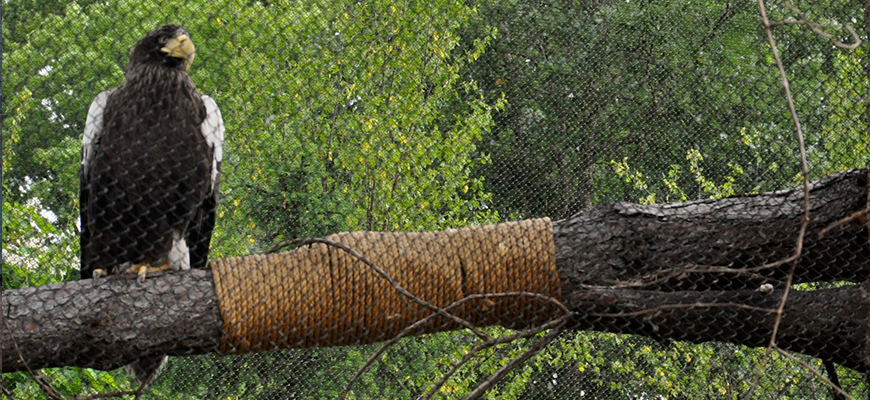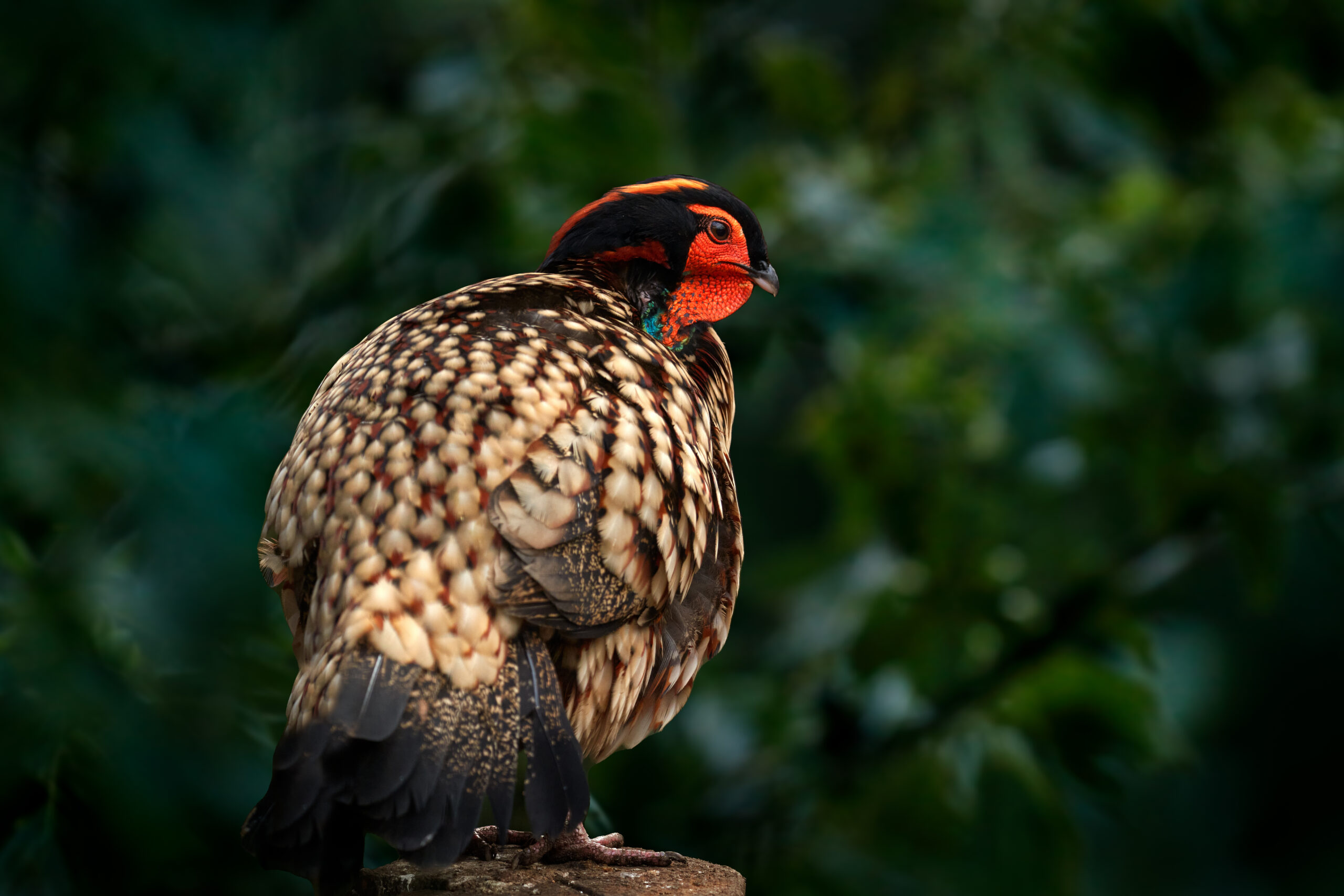A Rare Home for a Rare Raptor
The Zoo’s aviary for our Steller’s Sea-Eagle and birds of Far East Russia, Japan and Korea, is a home like no other. Most of us dream of a home with a stream and waterfall, but for the birds, their aviary offers both of these luxuries plus other important features tailor-made for these very rare and magnificent raptors.
The aviary is part of the Zoo’s award-winning Glacier Run exhibit. Known to have wingspans of up to eight feet, the spectacular Steller’s sea-eagle requires a vast amount of space. The species is vulnerable to extinction with about 4,000 birds in the wild.
Steller’s sea-eagles are native to Eastern Russia, so the Zoo’s new aviary was styled after a Russian evergreen forest. Here are some of the things guests will see when they step into the aviary:
- A male Steller’s sea-eagle named Piotr. He arrived from the San Diego Zoo in December 2012.
- A female Steller’s sea-eagle, Anastasia, arrived from the World Bird Sanctuary in March 2023. She was hatched March 21, 2018.
- The aviary is more than 50 feet tall and features a stream and waterfall
- An artificial pine tree extends to the top of the exhibit plus tree limbs that will encourage the birds to fly from level to level
- The Steller’s sea-eagle shares this space with other species including azure-winged magpies, red-breasted geese, an oriental white stork, pochards and tragopans.
- A thin mesh separates the magpie, geese and ducks from the eagles but allows the birds to see into the eagle’s home.
Meet the Neighbors
Red-Breasted Goose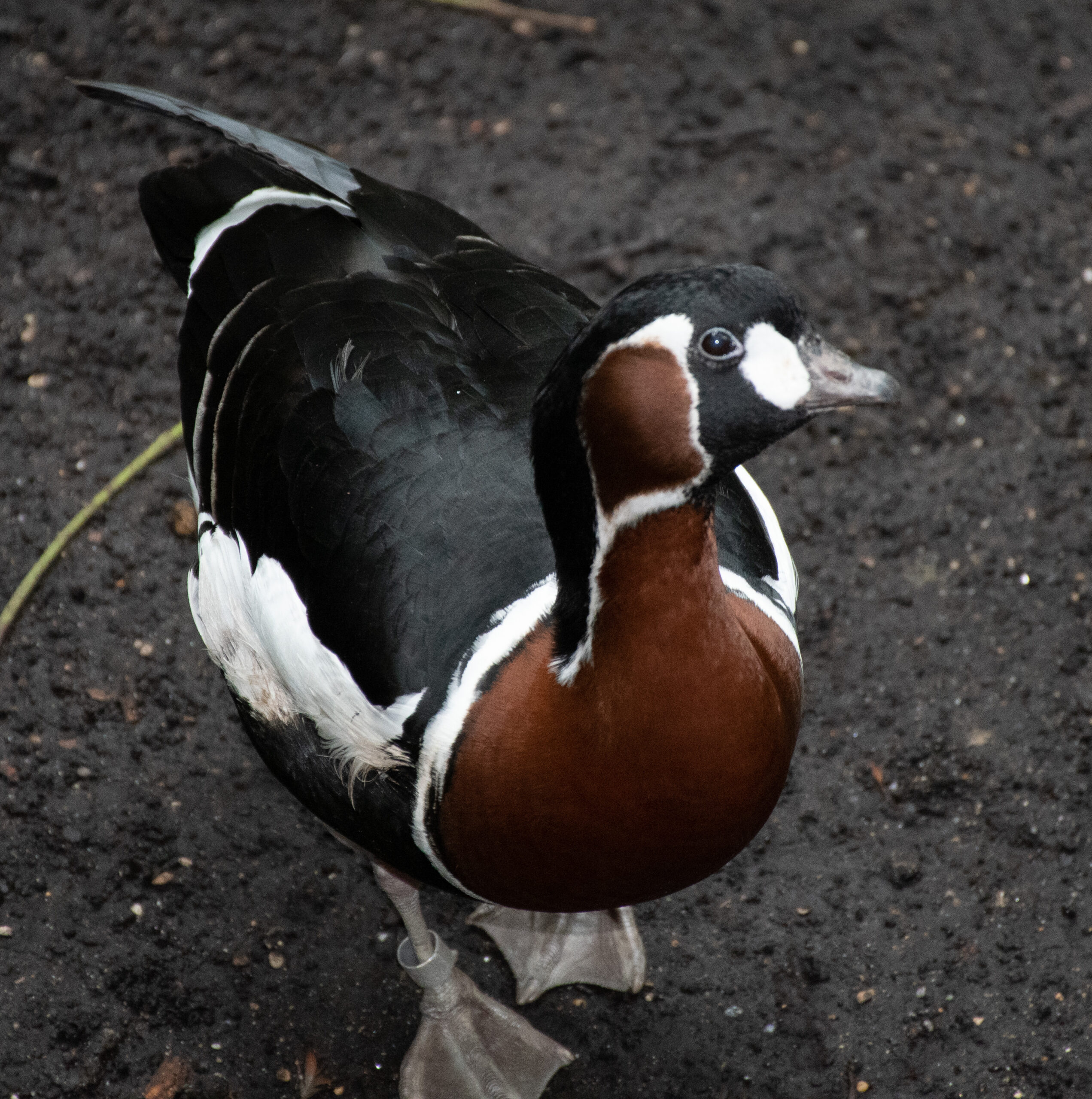
The red-breasted goose is easily identified by its black head and back flanks of white feathers and bold chestnut-red breast. Recent declines in its population have placed the species on the precautionary endangered species list. Because it’s in danger of extinction, your Zoo will make every effort to breed this species.
One might say the red-breasted goose is quite the traveler. It is known for breeding in Arctic Europe, wintering in southeastern Europe and occasionally visiting Great Britain and other western European regions.
The goose is an herbivore, which means it feasts on grasses and herbs. Its vegetarian diet keeps it svelte with the female averaging 2.5 pounds and the male weighing between 2.9 and 3.5 pounds.
Azure-Winged Magpie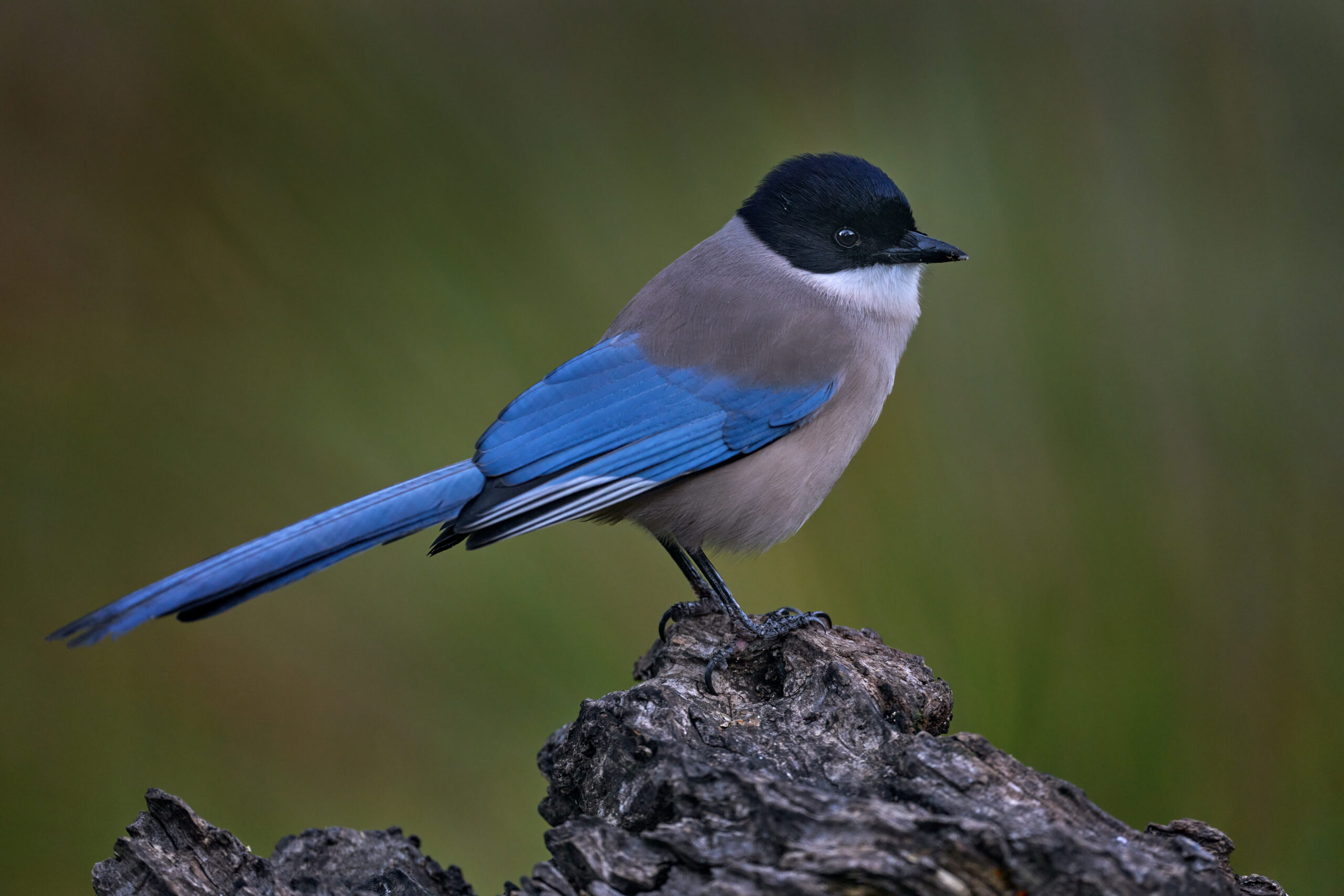
The saying, “birds of a feather flock together,” is certainly true of the azure-winged magpie.
These attractive birds are known for roaming, migrating and living in groups. They even take the neighborly approach to helping other magpies raise their young. A female magpie can lay up to nine eggs at once needing a village to help care for that many new fledglings.
A member of the crow family, the name “azure-winged” derives from the light blue azure-colored feathers on its tails and wings. It has a variety of calls including whistles and trills that allow members of the group to stay connected. While it normally feasts on acorns and nuts, it supplements its diet with soft fruits and berries, small insects and their larvae.
The magpie is rare in managed environments. They are part of the Association of Zoos and Aquariums management program and successfully reared offspring in 2023.
Baer’s Pochard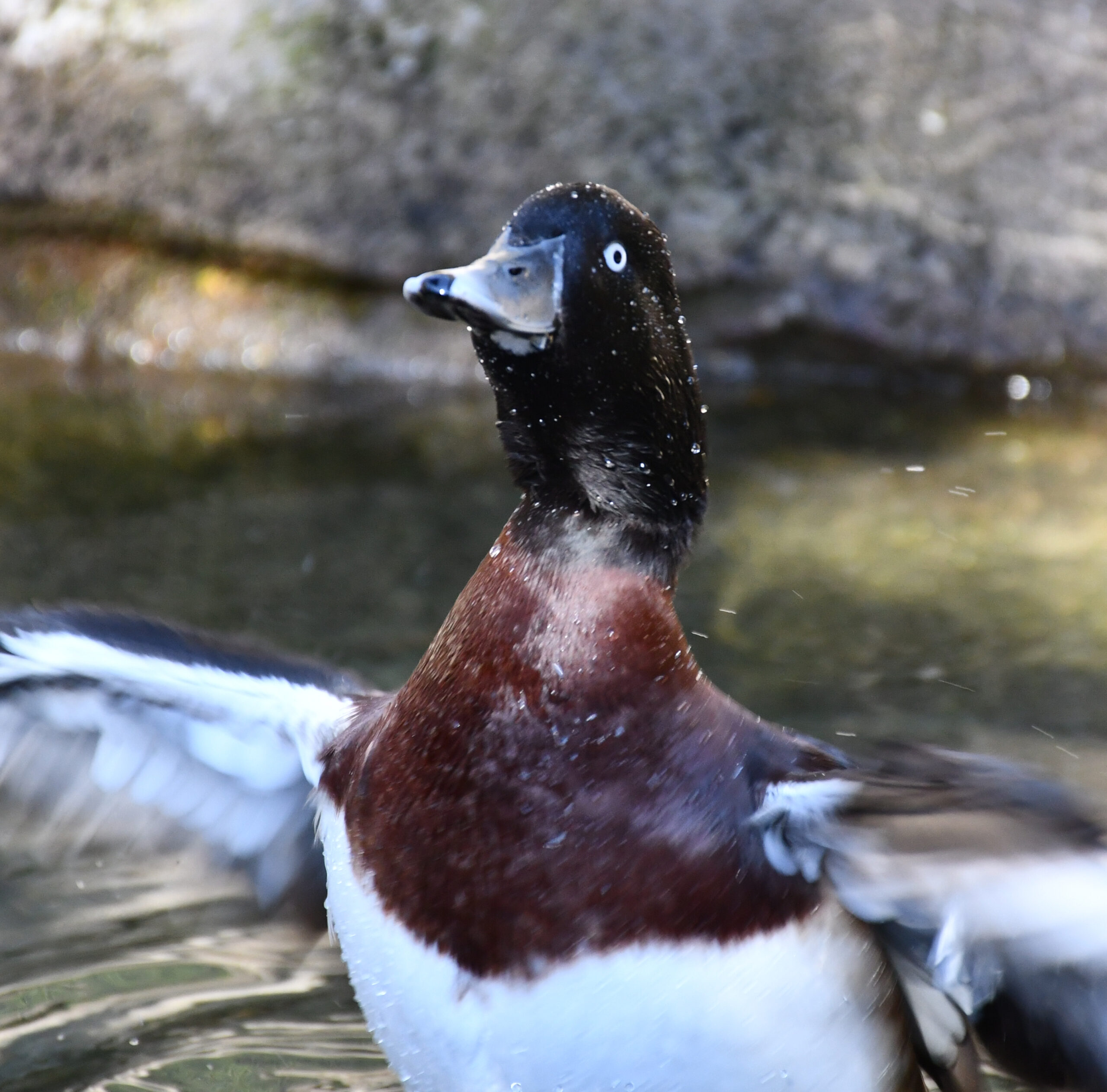
The Baer’s pochard are known for their rounded black heads and necks with undertones of dark green. While they are closely related to the ferruginous duck, they differ slightly in color. Most notably, the Baer’s pochard has white patches on the wings that can be seen when floating on the water.
This species is listed as critically endangered. At one point they were common in their native areas of northern and central China, but there are currently less than 1,000 birds left in the wild. The Baer’s pochard can also be found in southern China, Japan, Vietnam and India when migrating for the winter.
Cabot’s Tragopan
The male Cabot’s tragopan is known for its bright colors of orange and blue over a black head. It has an inflatable, blue-red wattle and decorative blue “horns” on the head. The female is far less colorful but has similar reddish-brown and white markings on the body.
This species is native to the mountainous regions of southeastern China. Although they are often found at higher altitudes, the Cabot’s tragopan is a ground-dwelling species that spends the most of their time foraging for roots, shoots, buds, flowers, fruits and seeds.
With populations less than 10,000 and decreasing, the Cabot’s tragopan is listed as vulnerable by the IUCN.
Oriental White Stork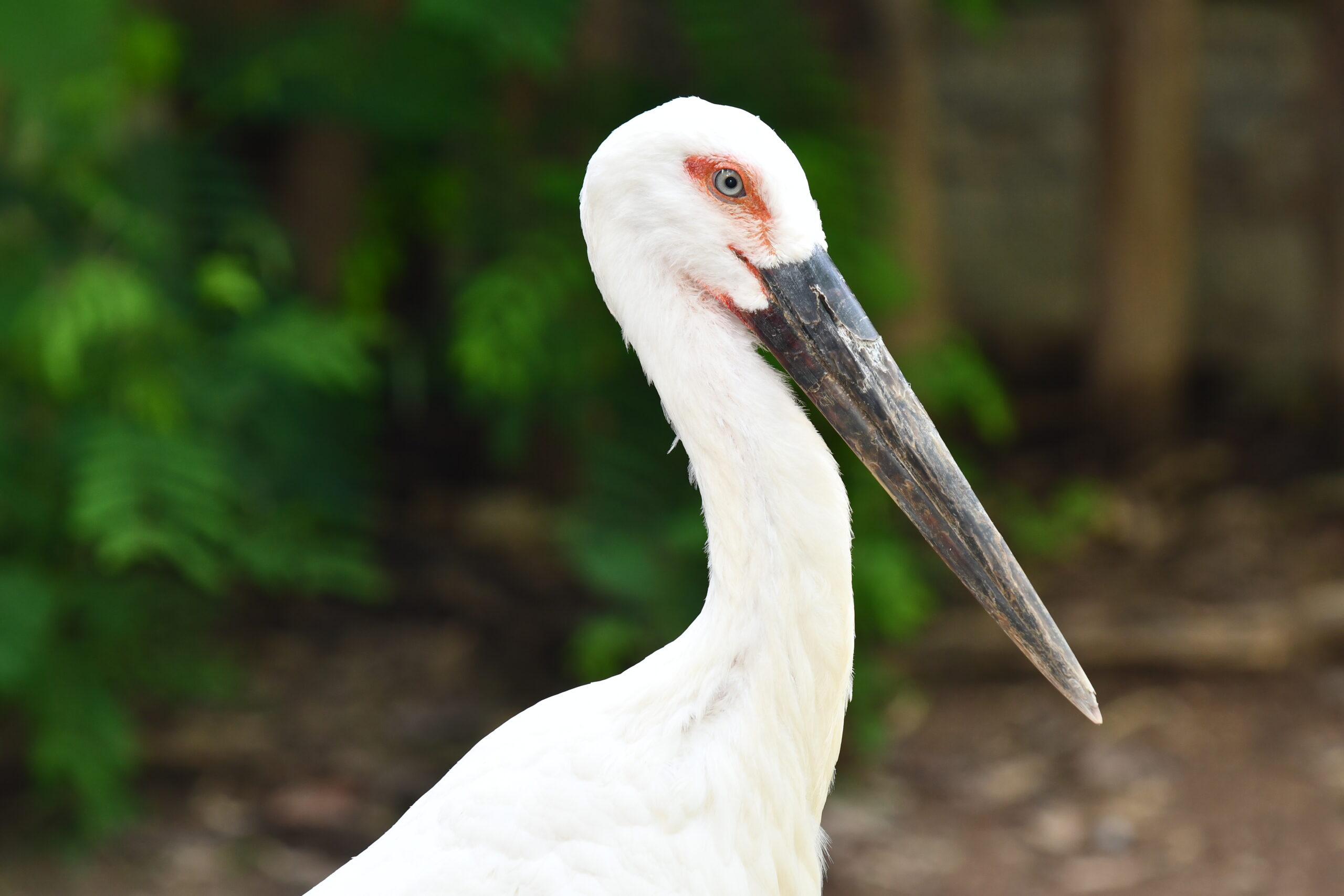
The oriental white stork is native to southeast Russia and northeastern China during breeding season, and various areas of China, Japan, South Korea, North Korea and Taiwan during the winter. They prefer wetland habitats and marshes. The are a large white and black stork that reaches around 46 inches in height.
Listed as endangered by the IUCN, this species suffers from loss of habitat, over-hunting and human disturbance. They are a protected species in Russia, China, South Korea and Japan.
Yoshi, the oriental white stork in the sea-eagle aviary, is the last of this species in North America!
Please note that the species configuration can change at any time without notice to accommodate weather, new species introductions, feeding schedules and locations, breeding, training and so on.

